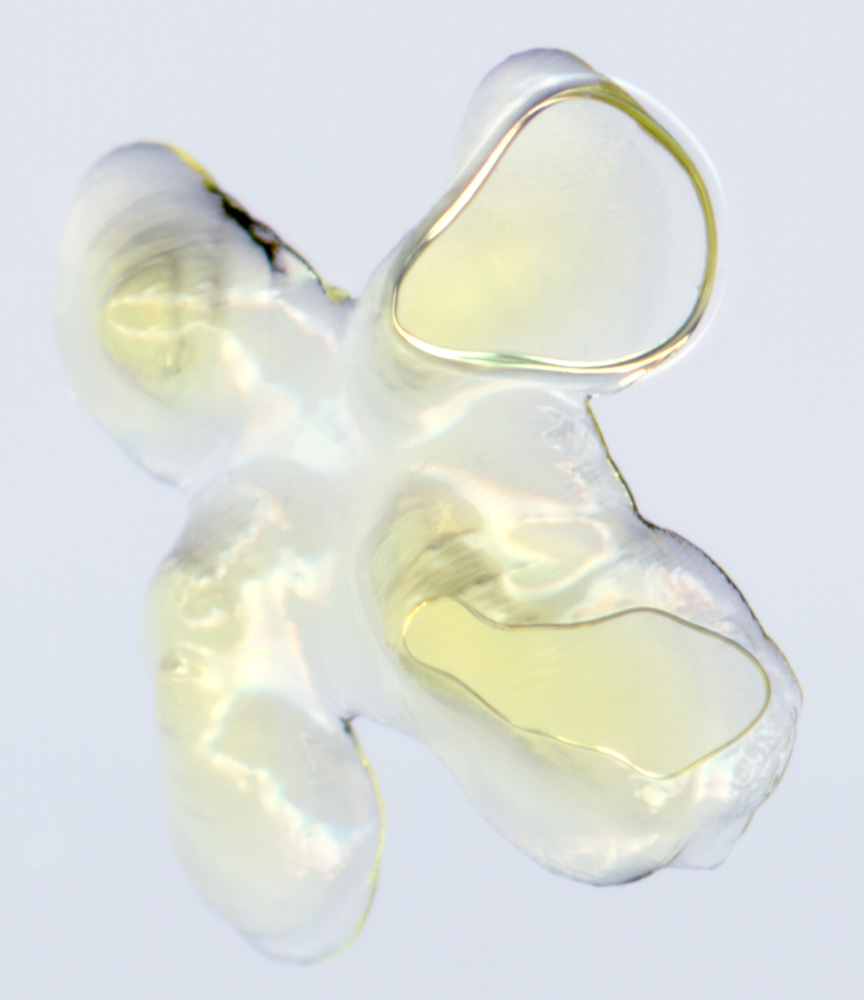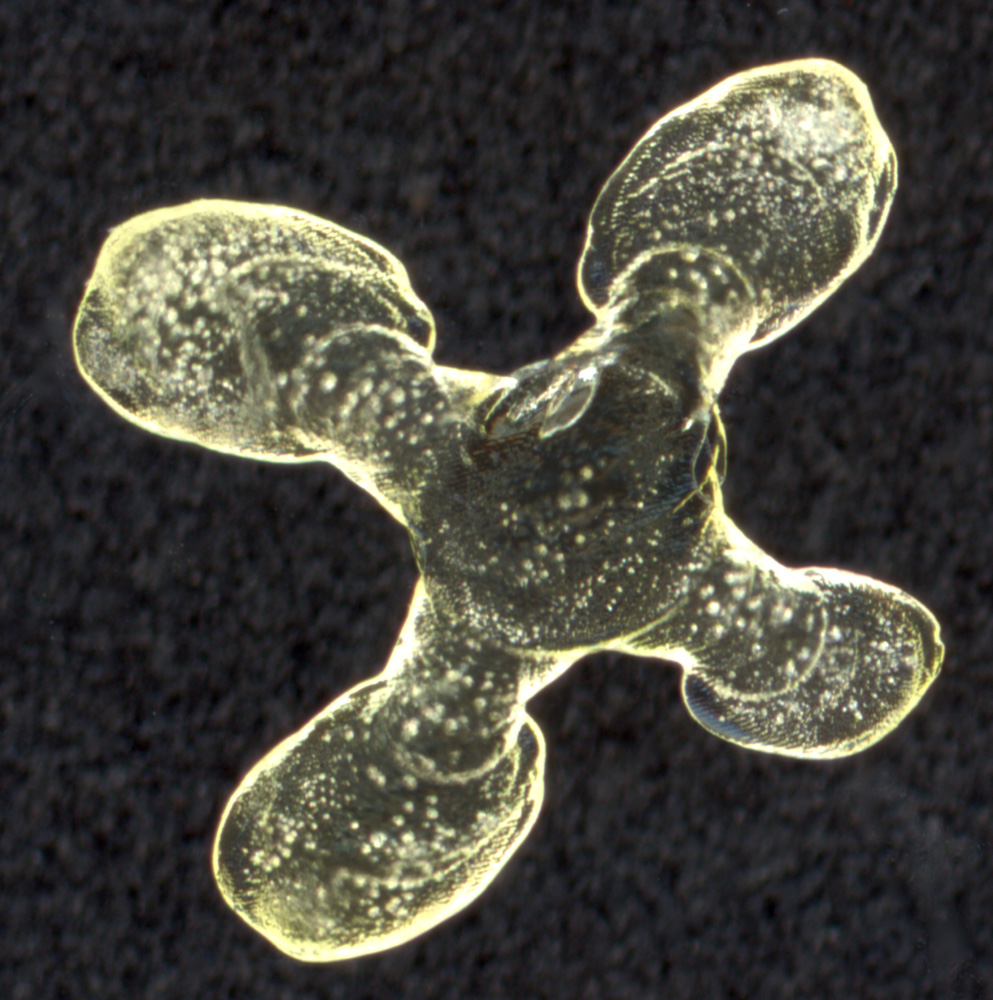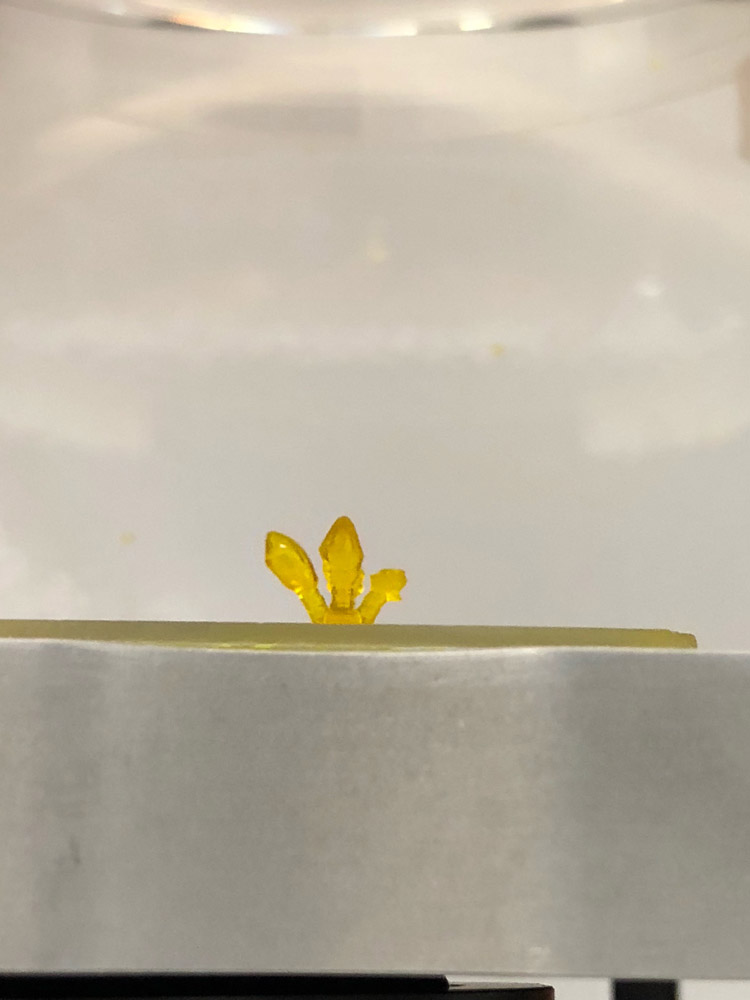hydrogel test prints
Friday, 22 October 2021
Carmine Gentile set up the LumenX bioprinter and did some trial prints of our shape.
The LumenX uses crossbeams of light to harden a light sensitive gel. The printer starts at the bottom and does a thin layer (100 microns) then lifts up and does the next layer and so on. The non-hardened gel drops away and the form is left. He experimented with the length of time that the light was on and the intensity of the light to get an exposure that would harden the gel adequately – very much like printing a photo in the darkroom.
I used to love working in the darkroom. I’d do endless test strips with sections exposed for different durations. In the colour lab I liked it when I could have 2 enlargers going at the same time. Expose #1 and put it through the machine, expose the next. By the time I’d done exposure #2, test strip #1 was ready to look at. I could lose days in there and rarely see sunlight. That’s the one thing I miss about working digitally.
In photography, I would have expected that 1 image from every 2 rolls of film would be successful – an image I would want to use. I was mostly working with an old medium format Mamiya which had an anomaly that I liked, it did 11 images per roll though it’s supposed to do 12. That’s a 1 in 22 ratio. Some weeks or even months on end, when the stars aligned in a fortunate manner, I would get 1 in 11.
That 1 in 22 or 1 in 11 is not luck. Quantity is necessary to experiment, develop and refine to find quality. Failures are crucial.
The first two LumenX printer runs left a flat little gum drop of a thing:


It had collapsed in on itself with each new layer as it wasn’t hard enough. The third print was a success. This glorious little object is 1cm high and golden.

photo: Carmine Gentile